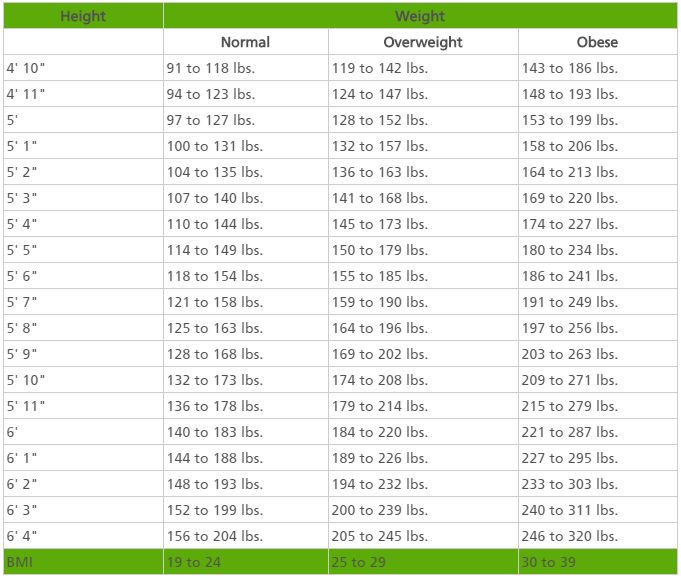Since improper weight management can lead to various diseases, knowing your ideal body weight is the first important step towards good health. So what is the best way to determine a healthy weight? You can calculate your body mass index using BMI calculator, or you can look at your height and weight in the chart below.
Note: This ideal height/weight chart is only suitable for adult men and women. It isn’t suitable for children or young people under the age of 18.
What is the problem with BMI?
BMI is a very simple measurement which does not take into account the person’s waist, chest or hip measurements. As an extreme example of this, an Olympic 100m sprint champion is likely to have a BMI higher than a couch potato of the same height. The couch potato may have a big belly, not much muscle and a lot of body fat on his hips, upper thighs, in his blood and on other parts of his body. While the athlete will have a smaller waist, much less body fat, and most likely enjoy better health. Using a pure BMI criteria, the couch potato may be considered healthier.
BMI does not take into account bone density (bone mass). A person with severe osteoporosis (very low bone density) may have a lower BMI than somebody else of the same height who is healthy, but the person with osteoporosis will have a larger waist, more body fat and weak bones.
Many experts criticize BMI as not generally useful in evaluation of health. It is at best a rough ballpark basic standard that may indicate population variations, but should not be used for individuals in health care.
Put simply: experts say that BMI underestimates the amount of body fat in overweight/obese people and overestimates it in lean or muscular people.
Weight and height guide chart
The following weight and height chart uses the National Institute of Health’s body mass index tables to determine how much your healthy weight should be for your height.

Sources used: Medical News Today, Hlfteam
